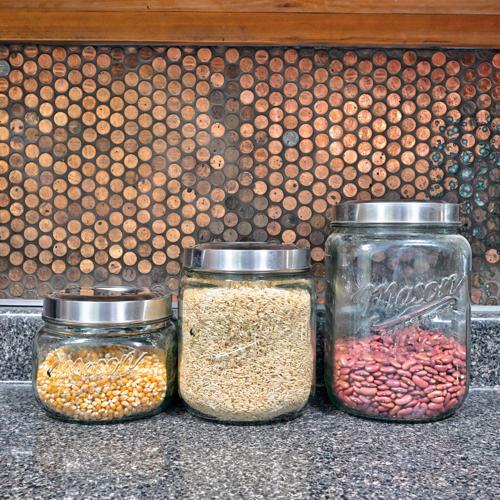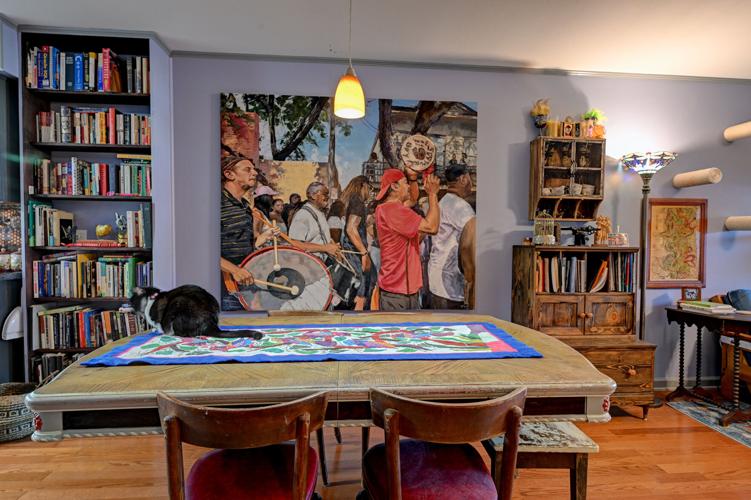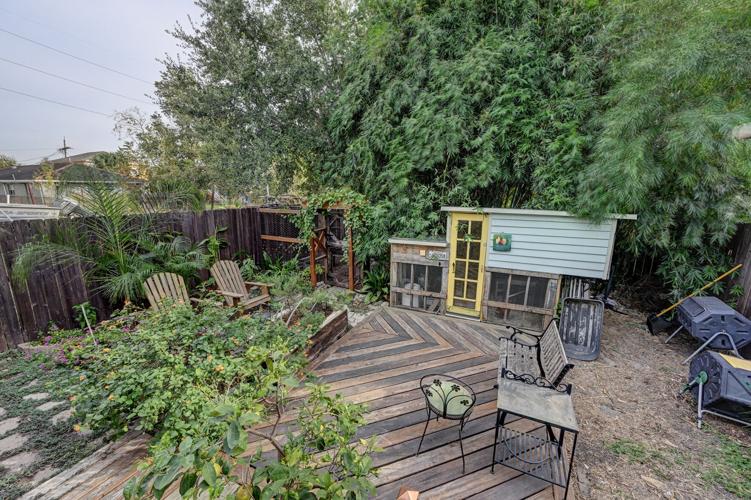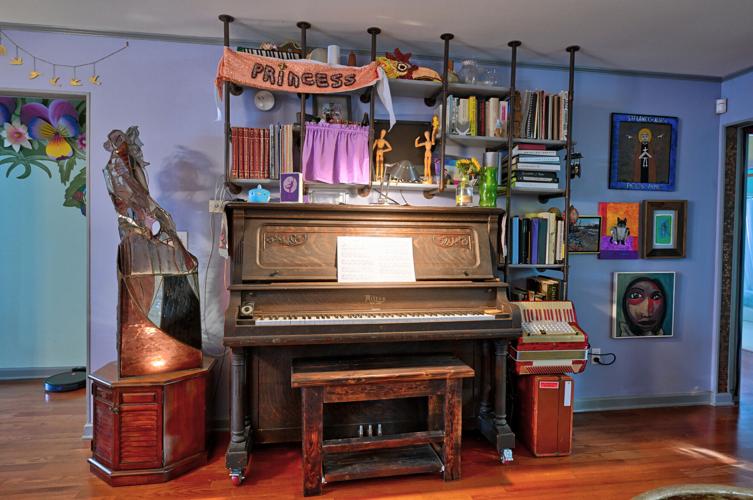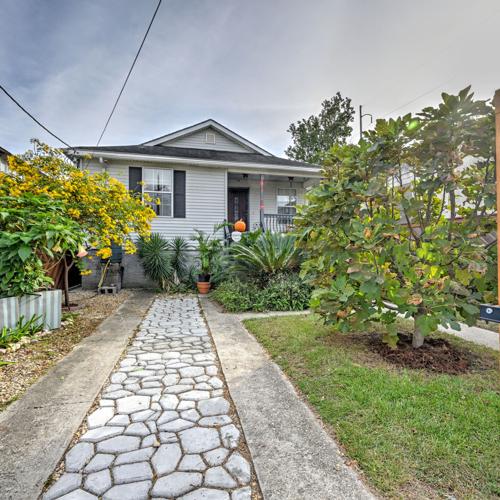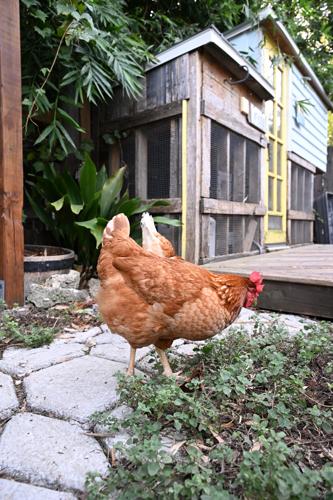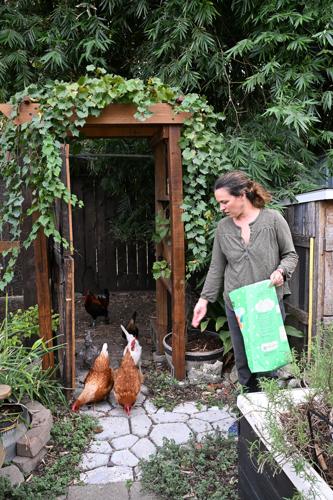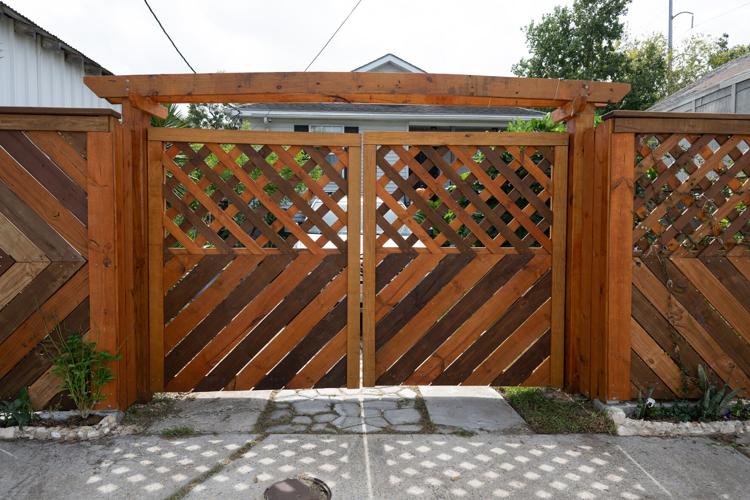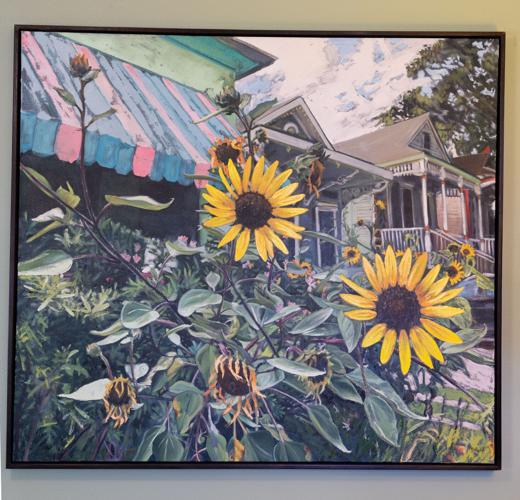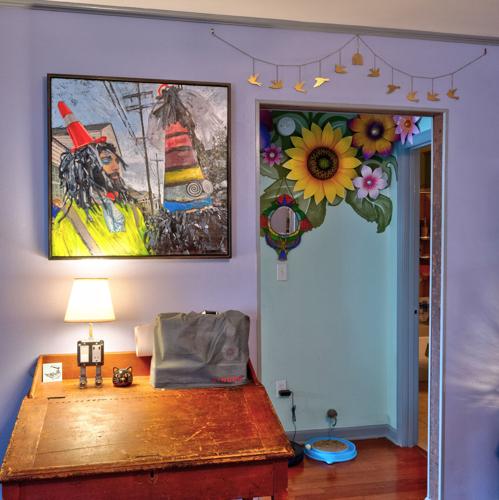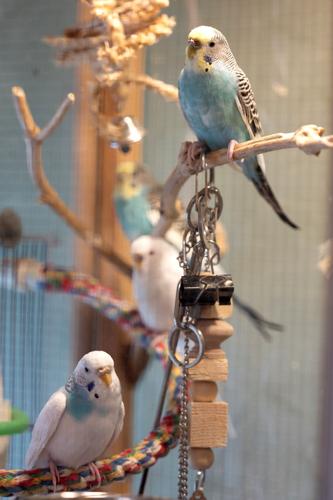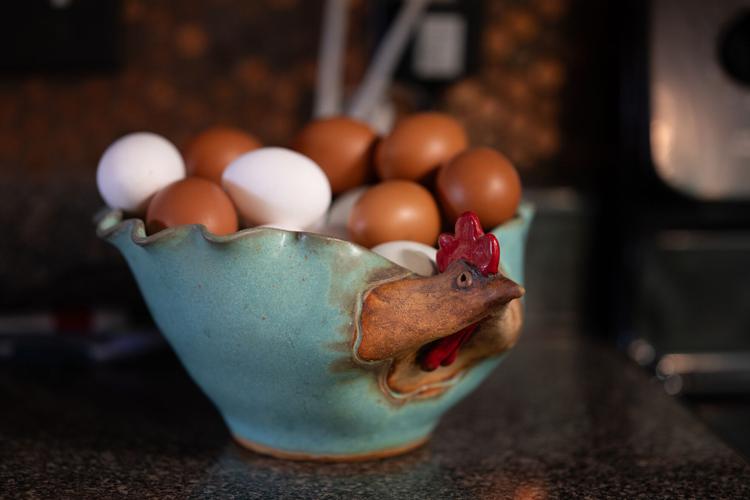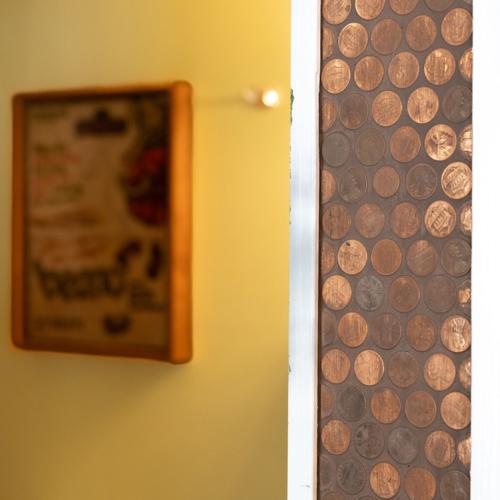To see through the eyes of an artist is to find interest in the mundane, beauty in the decrepit, purpose in the discarded and security in the uncertain. Sometimes, the meeting of one’s basic needs hinges on flexibility, grit and the ability to see beyond the obvious.
Such is the life of Stephanie Reed, a fine artist and a native of Portland, Maine, living in New Orleans’ 7th Ward neighborhood.
She and a smattering of neighbors share their mixed-use residential block with several welding shops and a roofing company. A horse and buggy repair shop once stood where Reed’s home was built in 2009 as a Federal Emergency Management Agency spec house after the neighborhood flooded following Hurricane Katrina.
“It’s peaceful here, especially at night,” Reed said. “We call it 'living in the country.’”
Enlightened reuse
When Hurricane Zeta took down a fence of vertical wooden boards in front of her home, Reed called upon the carpentry skills she learned from her father to rebuild it. Both the bottoms and the tops of the boards had been shorn off by the storm’s winds, or time, or both, so she upcycled the tattered boards into a diagonally oriented chevron pattern.

After Hurricane Zeta destroyed her front fence, Reed salvaged boards to build a new high-designed fence.
In the process, she spent almost no money and acquired a new fence while adding visual interest to the home she bought in 2016. “When I bought my house, it was still a very basic builder-spec house,” she said, “but I’ve customized just about every square inch of it to suit myself.”
She built the wooden fence enclosing the rear yard and finished it with a process known as Yakisugi or Shou Sugi Ban, a centuries-old traditional Japanese wood-burning technique that preserved the wood while creating texture and visual interest.
The fence encloses a deck in the same chevron pattern as the front fence, as well as a garden of fruit trees, bamboo, herbs, ginger and vintage bathtubs repurposed as planters. She created a 165-gallon rainwater collection system for irrigation.

The chicken coop was built of salvaged shipping pallets. A solar-powered automatic door admits the chickens into the run by day and into the coop at night.
Recycled shipping pallets were repurposed to make a chicken coop and an enclosed run to serve a variety of chickens — among them a Silkie, a Feral, a Maran or two, a white Leghorn, and golden Sex-link, and a visually stunning “mutt” — from which she collects fresh eggs each day, a commodity she often trades with her neighbors in exchange for goods or services.
A solar-powered automatic door admits the chickens into the run by day and into the coop at night. The ground throughout the yard is covered in a carpet of soft, fragrant (and useful) oregano.
A vine of muscadine grapes grows over and around the coop that homes the chickens, which are not named should a trip to the dinner table become necessary.
“Unfortunately, it’s happened before,” Reed said. “It’s the roosters. They can become territorial and aggressive. Then it’s time for coq au vin.”

A bowl made by Reed's sister is filled with eggs from her chickens.
A creative life
Reed’s penchant for creativity and thrift are on display within her home as well. In the living room, she mounted a series of jumps, hammocks, platforms and a post on the wall behind the sofa to create an aerial “condominium” for her cats, Ms. Kitty and Gustav.
She uses other walls to store her large-format paintings, most of which are made with oils, often mixed with a cold wax medium that allows her to achieve a thick texture and buildup of palette knife strokes to represent a range of images of New Orleans themes and locations, such as streets, paths, second-line parades and river transportation.
“My paintings are built up of layers of paint, sometimes moved around, scraped off, added elsewhere,” Reed said. “This gives them a dynamic and somewhat unstable energy close up, yet they are almost photo-realistic at a distance. My paint strokes are bold and discrete, yet, taken as a whole, a painting still holds meaning.
"I am not trying to create a photograph. I want my process and hand to show through in the work.”

Reed paints images of New Orleans themes and locations, such as second-line parades,
Reed is represented by 600 Julia Gallery in the Warehouse Arts District and Where Y’Art Works. She studied visual arts at both Brown University and the Rhode Island School of Design before earning a Master of Fine Arts degree from the Maine College of Art in 2008.
A romantic relationship led her to New Orleans in summer 2010. Her romance with New Orleans keeps her here.
“My work meditates on specific people, objects, time and place. I prefer to connect to real contexts than to the general tropes of New Orleans. Like the city, I want my compositions to hold together, yet with the tension of multiple parts that may just fall into chaos.”
A three-dimensional stained glass figurative sculpture by Reed’s mother, Pat Reed, is on display in the living room, as is a colorful detailed map drawn by geologist and cartographer Harold Fisk of the ever-shifting banks of the Mississippi River.
The walls within the hallway connecting her studio with a guest bathroom are covered in colorful flowers created by artist Dana Beuhler, of Mardi Gras Customs. “I built her website and was paid in paper flowers,” Reed said. “So yes, I build websites, too.”
The walls of her studio are covered in yet more of her paintings as well as peg boards holding the tools of her carpentry trade.
The self-described “bird and cat lady” removed the panels but kept the framework of a friend’s discarded armoire to create a lighted aviary for a family of colorful parakeets.
Thousands of pennies were used to tile the kitchen walls and the frame around a doorway. To accomplish these tasks, she enlisted neighborhood children who thought it was funny to cover the walls with money.

The sculpture at left is by Reed's mother and the piano and accordion are part of Reed's musical side.
"I am also a musician,” said Reed, a member of the Krewe of Red Beans. “I play piano and the accordion. I find that these creative pursuits complement each other.
"For me, a painting is more like a message in a bottle that you hope will reach someone, though you may not know who that person will be. Music has a much more immediate impact. The two require and resonate with different, yet necessary, energies for me.”
Project manager, seamstress, computer programmer, website designer, carpenter, musician. Like many serious visual artists, Reed works with her hands to do whatever it takes to leave open that magical time of day when the light is warm and slanted just as the sun is about to set, the time when she feels most inspired.

